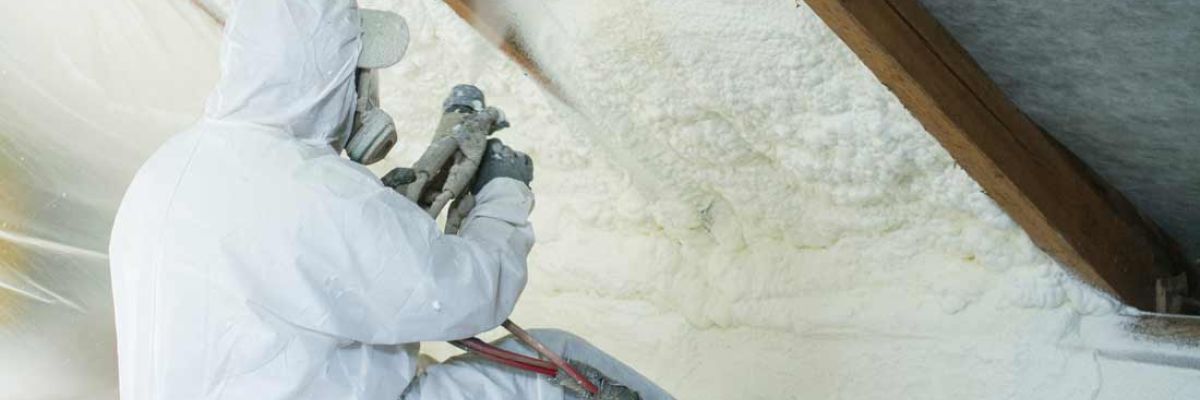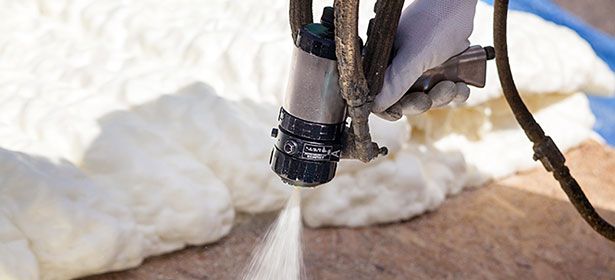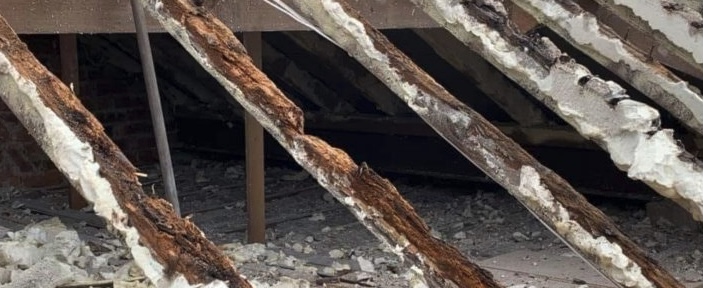Spray Foam Insulation & Mortgages

What is spray foam?
An alternative to insulating your home using the standard material you find in DY stores that is rolled out between joists to retain heat. Have you seen cans of expanding foam used to fill joints? Same idea.
Essentially it is a liquid that is applied by spraying it into the areas that require insulating, between the joists of roof space or between joists in the floor of a loft.

It takes a level of skill to apply, as it is expanding only so much is applied and it then expands to fill the whole area between joists. Too much and it will mean a lot of cutting away of the excess, not enough and it may not be as effective.
Estimates for using traditional material to insulate a home range from £500-£1,200, you can save by doing it this way by yourself. For spray foam, the average cost is around £2,000.
There are two types of spray foam in use. Briefly, they are:
Closed Cell
Closed cell sets hard and is suggested to be the best insulator than the Open Cell covered next. Once set there are lots of gas pockets in the foam which slows the movement of heat. It does not allow moisture to travel through it, in fact, it is a barrier to moisture so it requires a well-ventilated space.
Open Cell
Open cell is not as dense and not considered as good an insulator as Closed Cell. In order to get the same level of insulation as Closed Cell, it needs to be thicker which is not always possible depending on the space. It does however create a good sound barrier and reduces airflow. Unlike Closed Cell, it does allow moisture to travel through it.
Benefits of spray foam
It is used in lofts, walls and floors. There are some clear benefits to using spray foam as insulation which includes:
- Useful to get into hard to reach or awkward spaces
- provides complete insulation, no gaps or spaces around it
- Prevents air escaping, warm air that is
- Act as an effective layer of soundproofing
Downsides to spray foam
Whilst there are some clear benefits to spray foam it also has some downsides that are going to have varying importance for anyone considering it, some of these downsides include:
- Cost, it is more expensive than traditional insulation
- Needs to be done professionally, not something you can do yourself
- Can cause dampness and the timber around it could rot
I have highlighted the last point as this as it turns out it is a real problem for many homes.
RPSA Investigation
A press release from the RPSA can be found here.
The Residential Property Surveyors Association in December 2021 published a report on the use of spray foam insulation. Their findings were concerning. A quote that sums up their findings is:
There may be as many as 250,000 homes with spray foam insulation in the loft, and the guidance being offered to their members is to adopt a highly cautious approach, recommending removal of the spray foam in almost every case
Recommending the removal of the foam in almost every case is not something to be ignored. However, it is not entirely bad news, especially for those that do have it installed.
Much of the concerns raised were around installers failing to correctly identify whether a property was right for Spray Foam. The report stated that the foam can put stress on roof timbers and those timbers are likely to be supporting the roof itself. Air circulation could be restricted in the roof space which may then lead to condensation and that then leads to damage.
A further quote from the RPSA Chairman stated that:
Unless there was “extremely detailed information” about the nature of materials, roof covering condition and structure prior to installation, studies of air and moisture it would be “impossible” for the surveyor to not recommend immediate removal. In our experience, this type of information is rarely, if ever, available.
The suggestion is that installers often prey on the vulnerable and installation in some if not many cases are likely to have been carried out with insufficient preparation or consideration of the risks to structural roof timber being weakened by rot.
The image below shows a roof where spray foam had been used. Rainwater was getting trapped between the foam and roof, with nowhere for the water to go it gradually rotted the timbers. You can clearly see the timber damage that resulted in the entire roof needing to be replaced. It would have been virtually impossible for a homeowner to know this was happening until it was too late.

Mortgage Concerns
The report suggested property owners would find it difficult, perhaps even impossible to sell a property with Spray Foam installed.
Given Spray Foam is such an effective barrier that hides most of the timber around it, many homeowners who had it installed years, perhaps decades ago may not know their roof timbers are decaying and may have decayed to the point it is already beyond repair.
All lenders by this point are likely to have a policy on property where spray foam has been used, some may not consider lending unless a structural survey is carried out.
Of course, not every installation is necessarily bad. But it would require investigation to understand whether a property is adversely affected by it.
If you have spray foam installed make sure you have regular checks carried out. If you are buying a home where spray foam has been used a structural survey may be money well spent.
For those considering spray foam, I would not suggest it is an absolute no but you must make sure the installer is a reputable one, a guarantee is provided preferably through a recognised trade body.
Lee Wisener, CeMAP, CeRER, CeFAP
Having worked in the mortgage industry for over 20 years I have always wanted to build a website dedicated to the subject. Also being a geek when it comes to the internet all I needed was time and I could both build the site from scratch and fill it with content. This is it!

<< Newer Post
Mortgage Affordability GuideOlder Post >>
What is a Consumer Buy To Let Mortgage?